After visiting the Chickasaw Cultural Center the day before, we wanted to learn more about some of the artists and cultural history of the Chickasaw Nation. First, we made a quick stop in Ada, OK, (about 30 miles from Sulphur), to visit the Chokma’si Gallery.
The current exhibit is of photographs by the well-known historian and photographer, Edward S. Curtis. In 1906, JP Morgan gave Curtis $75,000 to produce a series on Native Americans. The result was over 40,000 images of 80 different tribes and a 20-volume set of books. We have seen several other Curtis exhibits during our travels, and his work is incredible! it preserves traditions that have long since disappeared. The exhibits change periodically so it’s always worth a visit.
There is also a small gift shop with unique items by Chickasaw artists. We purchased a couple of leather bracelets that I love!
We made a quick stop at McSwain Theatre while we were in Ada. It opened as a movie theatre in 1920. With several ownership changes and renovations over the years, it was purchased by the Chickasaw Nation in 2002. An extensive 5-year renovation led to a grand opening in 2009. Today it is a music venue, movie theatre, and art gallery (www.mcswaintheatre.com).
About 40 miles south of Ada is the historic capitol of the Chickasaw Nation. Named for the heroic Chickasaw chief, Tishimingo, the quaint town preserves its Native American roots. We stopped first at the Chickasaw Nation Information Center.
Maps and information about attractions are available and the staff is very friendly and knowledgable. Additionally, there are many gift items by or about the Chickasaw tribe.
A couple of blocks away is the Chickasaw National Capitol. Built in 1898 of red granite from a nearby quarry, it was in use until Oklahoma statehood in 1907. In 1920, it was sold to Johnston County and used as the county courthouse.
In front of the building is a bronze statue of Piominko (1750-1799), a Chickasaw leader and warrior, who signed the Treaty of Hopewell (1786) with the US government. Piominko had a personal relationship with President Washington; and, was awarded the George Washington Peace Medal for his military service and loyalty to the US.
Today, there is a museum in the building that helps tell the story of how the Chickasaw people fought for their tribal identify and independence. The exhibit focuses on their government history from 1856-1907 with accurate replicas of Governor Douglas H. Johnston’s office.
A direct descendant of Chief Tishimingo, Johnston was the Chickasaw governor for almost 40 years providing wise and strong leadership.
Below is the original vault door for the Chickasaw national secretary’s vault. Public papers, legal documents, and currency were checked in (or out) by the secretary.
Photos of the Chickasaw Governors (from 1856 to 1939) can be seen in the hallway. Displays tell the story of the struggle for the Chickasaw to retain their land and sovereignty in the Indian Territory and after statehood. Settlers brought ranching to the region.
Below is the original Capitol Well that served the National Capitol and National Jail and Jailor’s House located on the grounds. The well house has been recreated based on photos from the 1890s. Also shown is a bell used during that same timeframe.
The first Chickasaw Council House built in the Indian Territory is preserved inside the museum next to the National Capitol building.
Additionally, the museum features art, artifacts and exhibits about of the Chickasaw Nation.
Shown below are traditional clothing and equipment for stickball (a traditional game played for centuries).
Well known Chickasaw people are featured including the first Chickasaw female pilot, astronaut, military heroes, Miss Oklahoma, and more.
The seal of the Chickasaw Nation can be seen in flags and plaques throughout the area.
Learning about the Chickasaw has been a fantastic experience. I encourage anyone who enjoys history about our nation to find an opportunity to visit this part of the country. There is one more place we want to visit: the Chickasaw White House. See the next post for details.

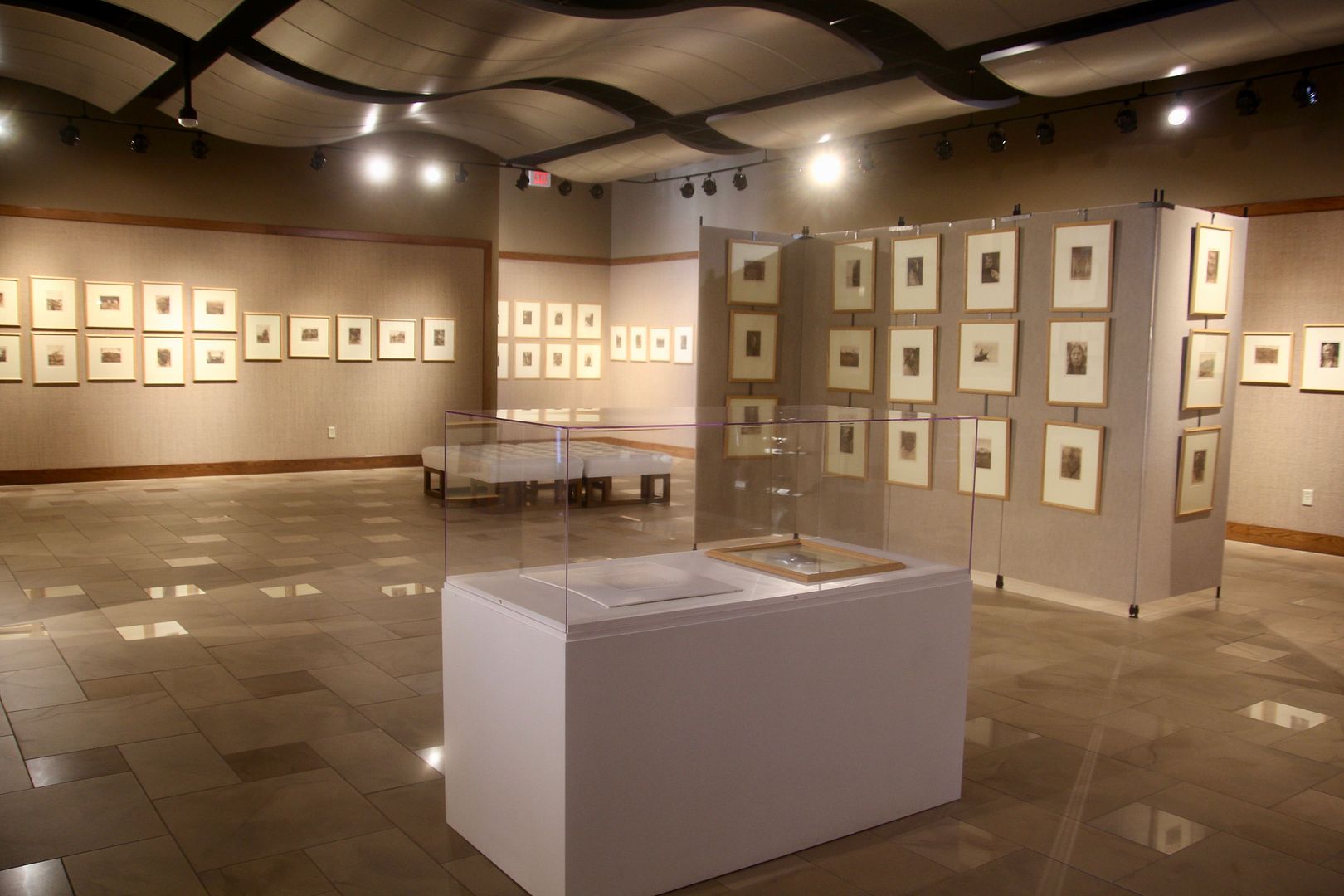

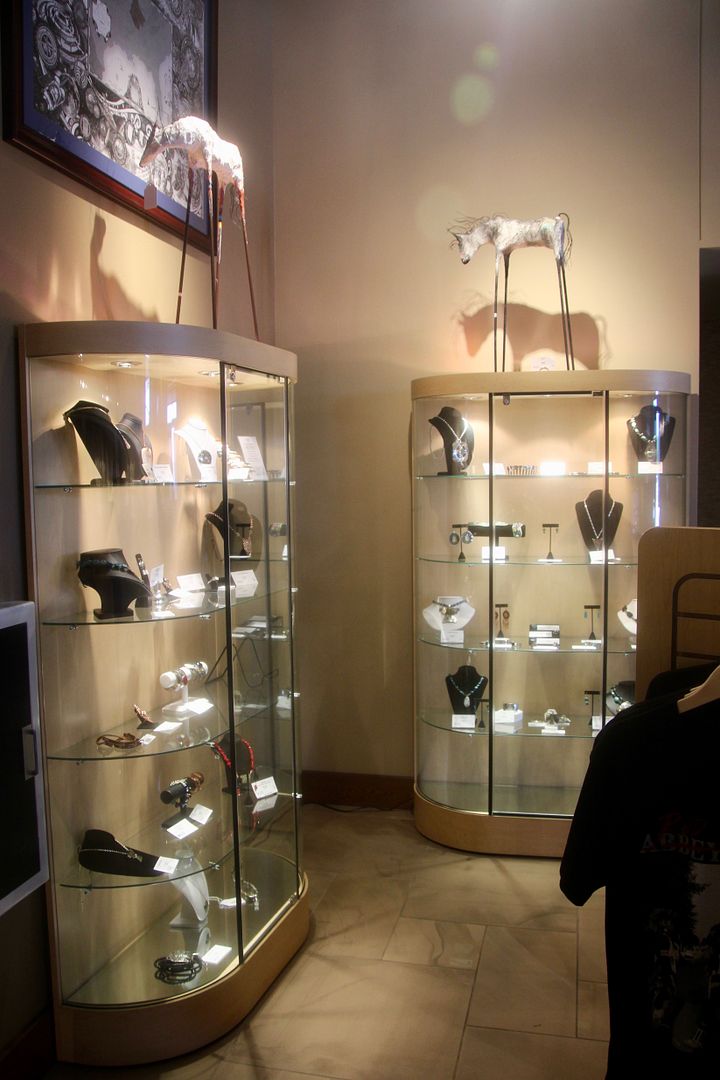


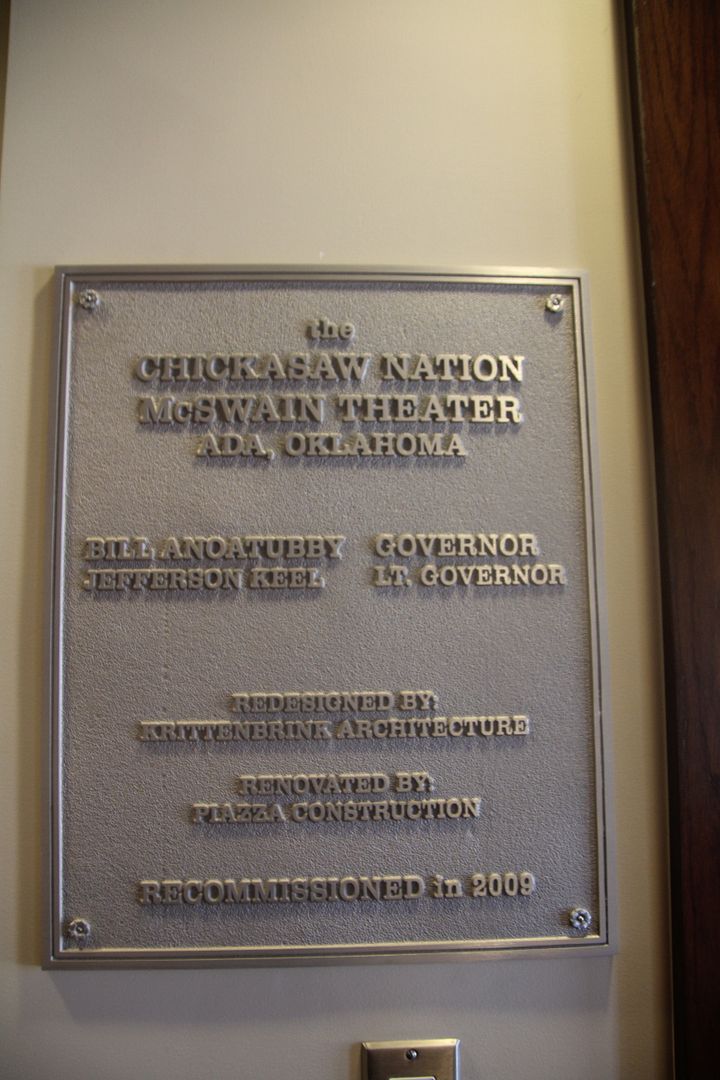

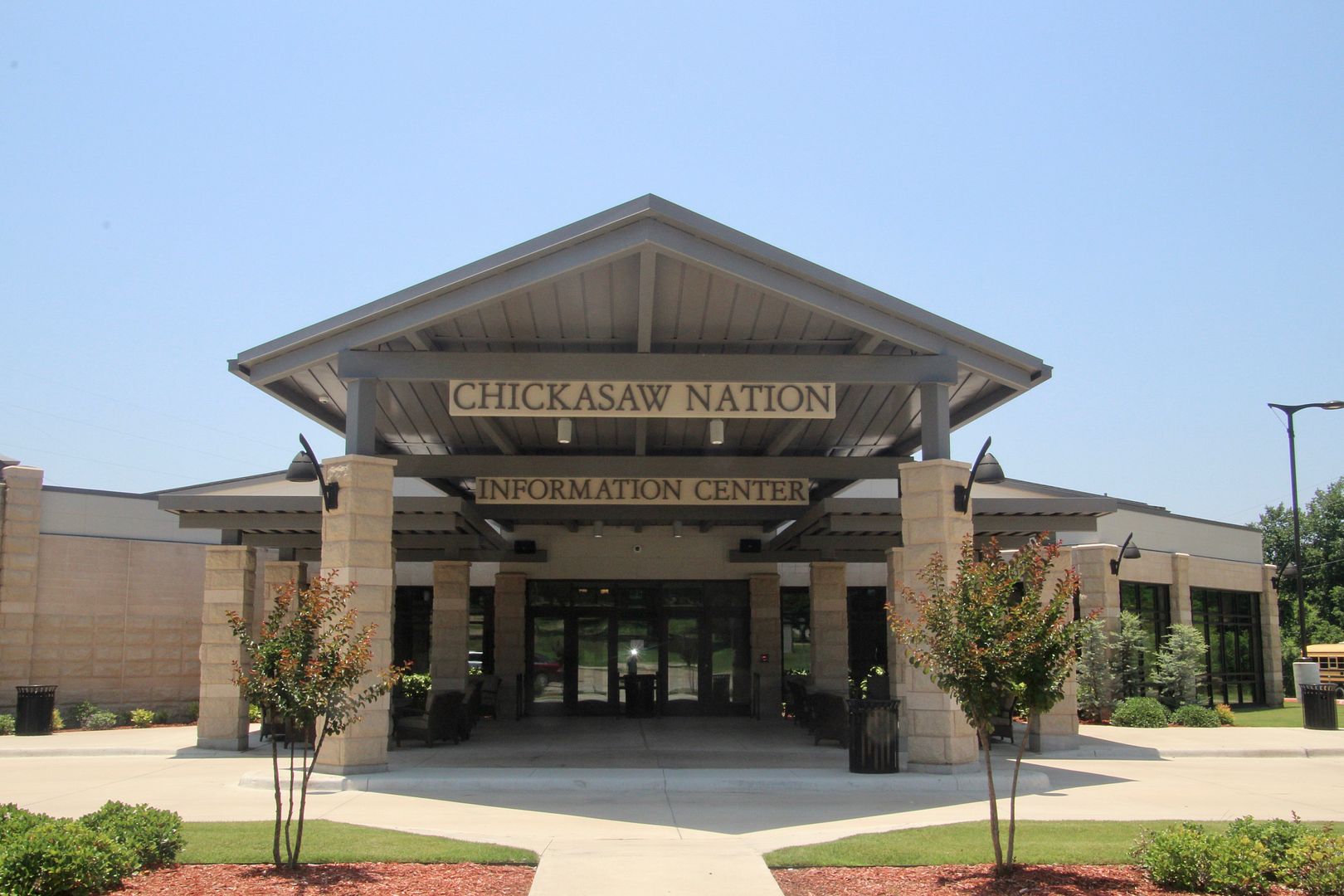
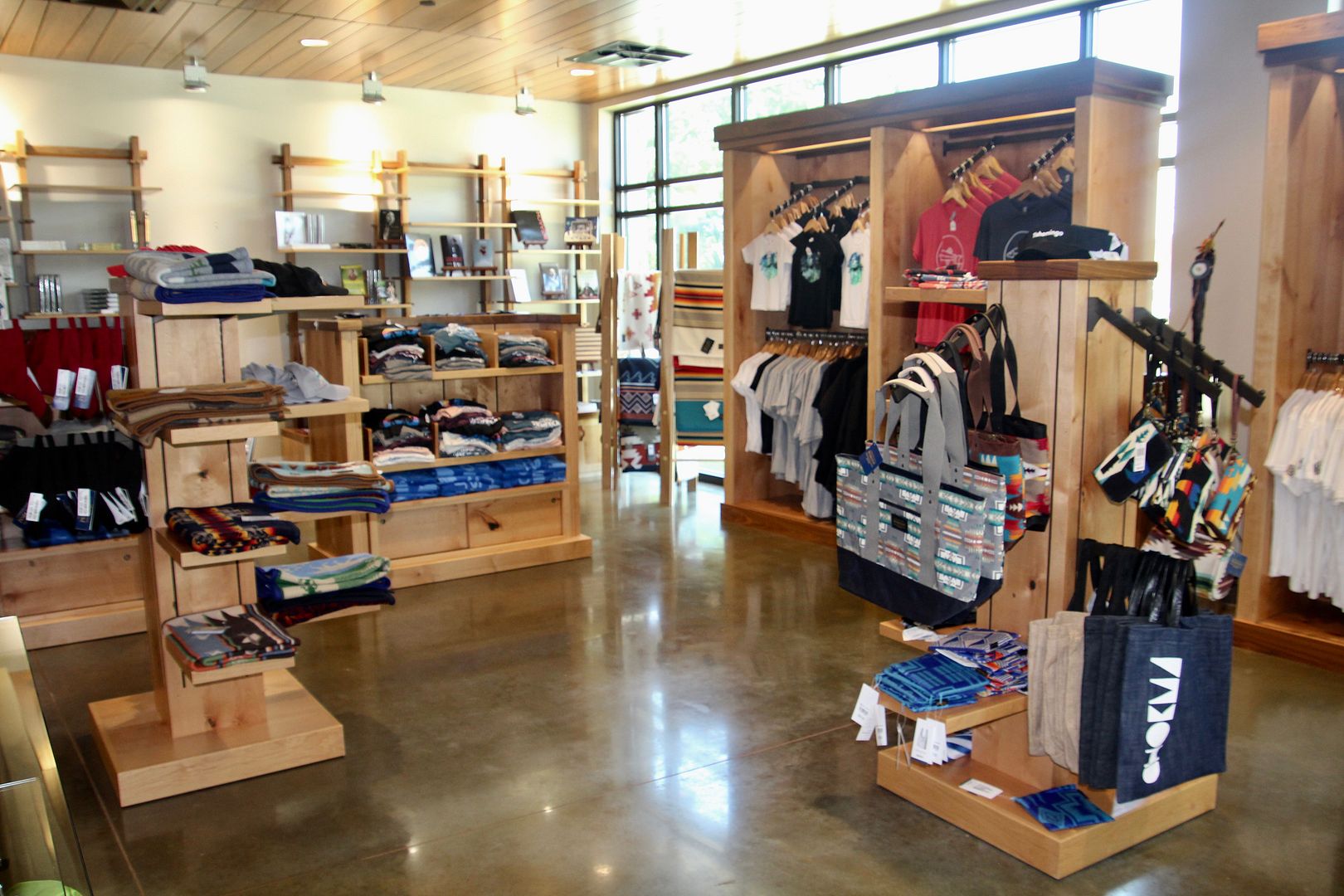

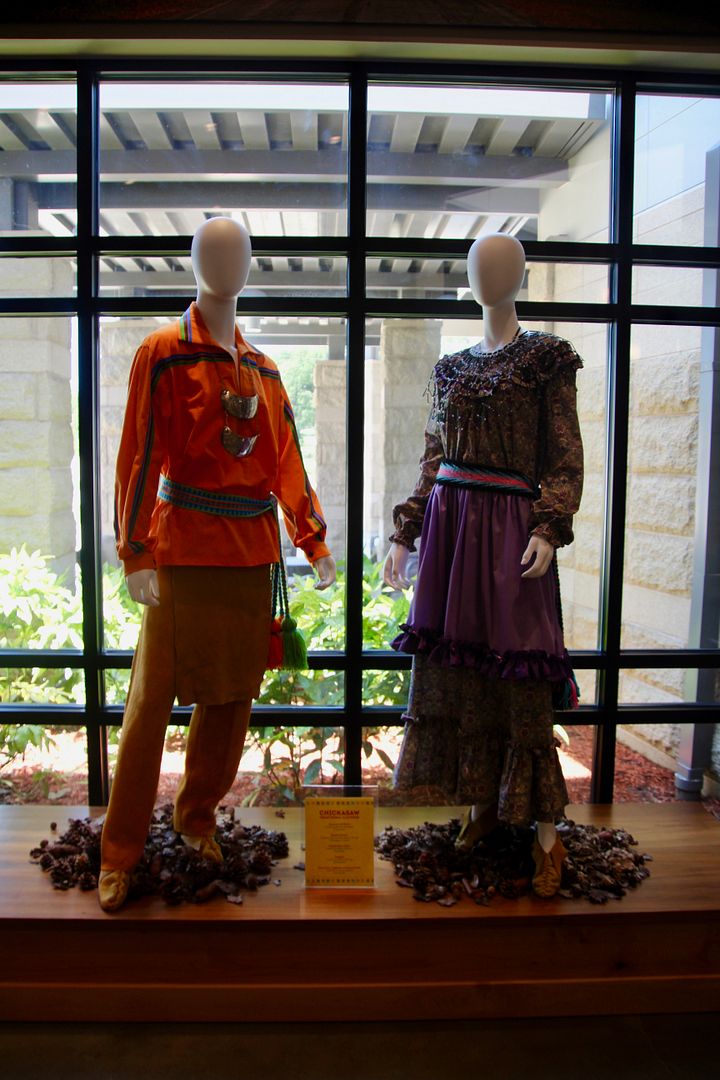

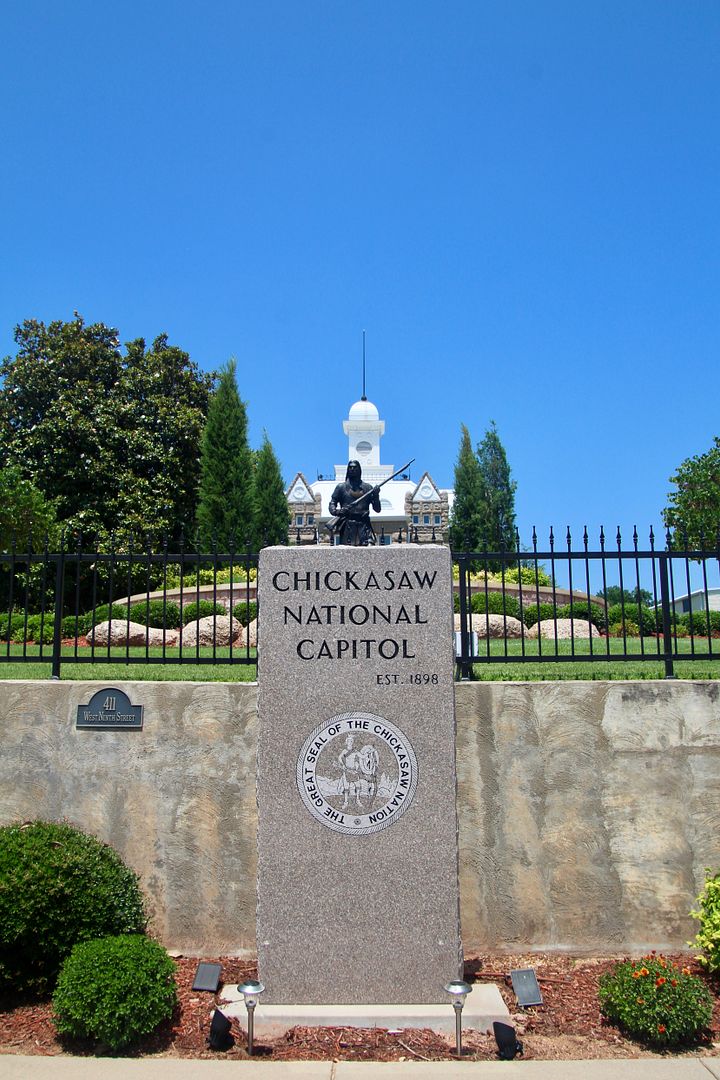

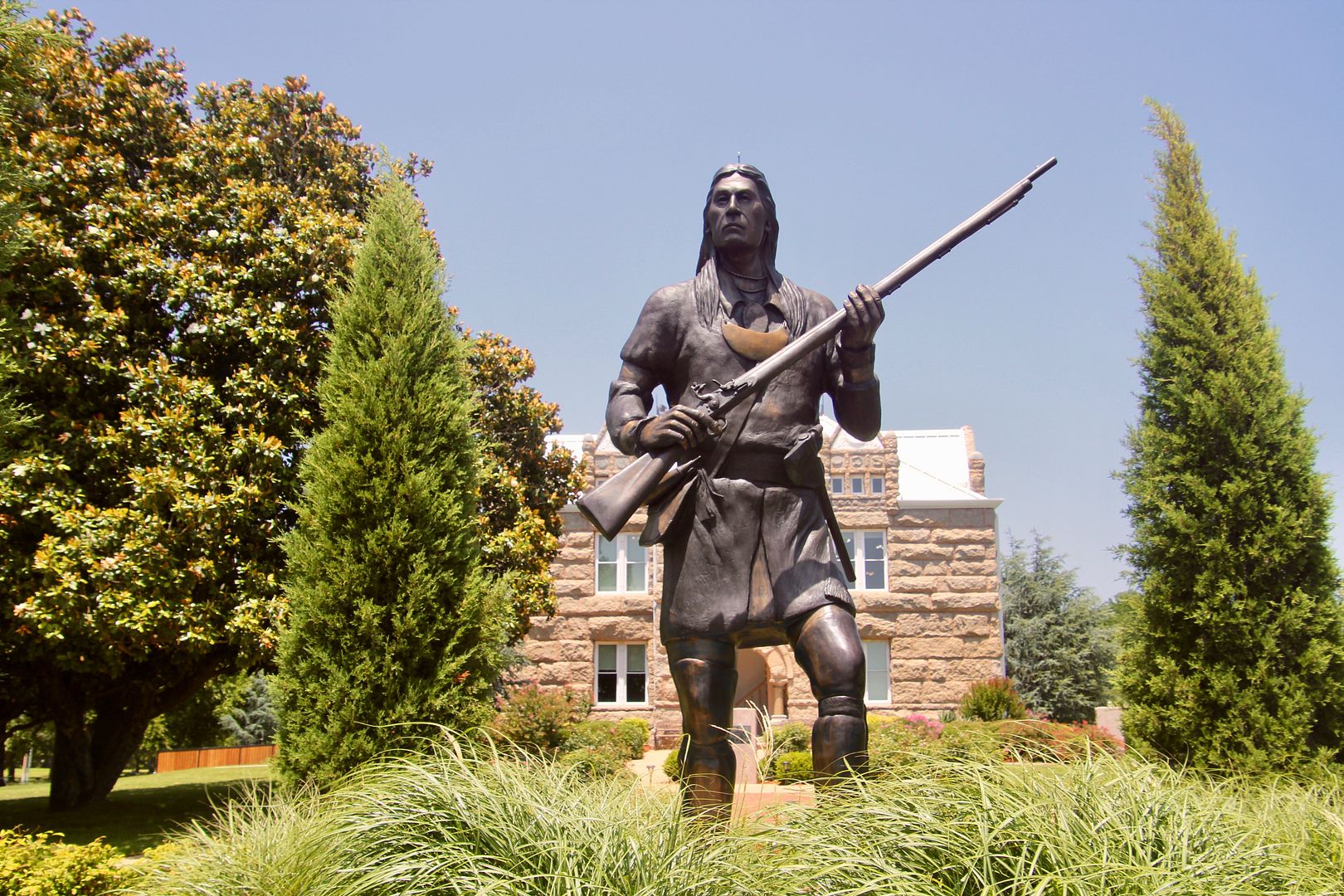
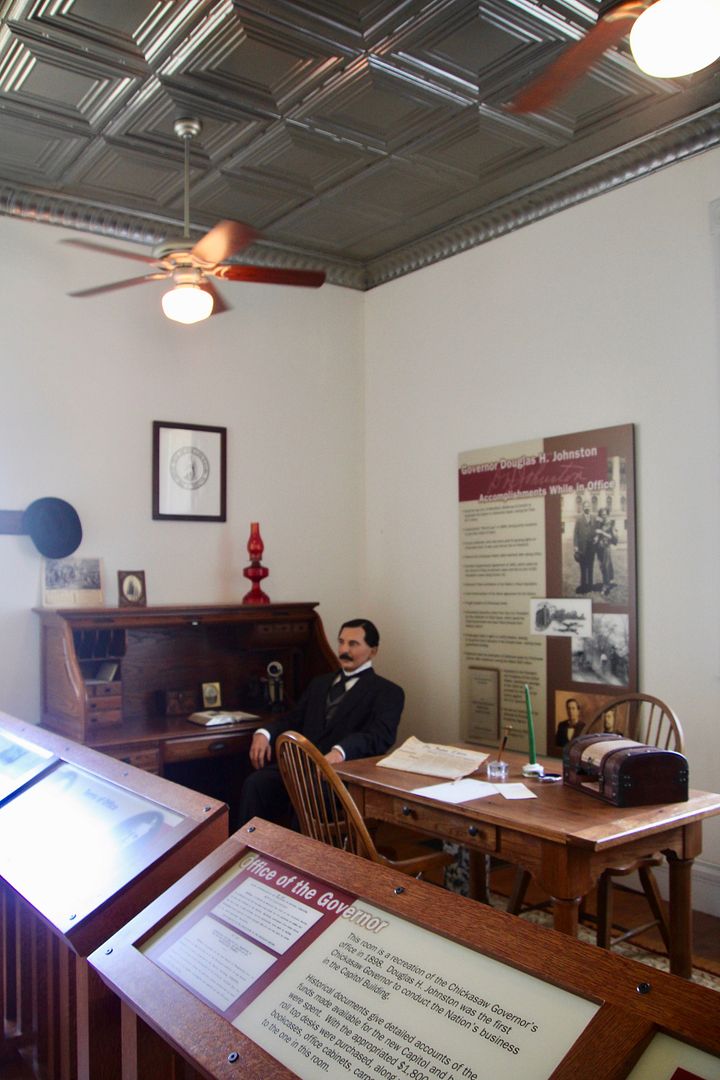




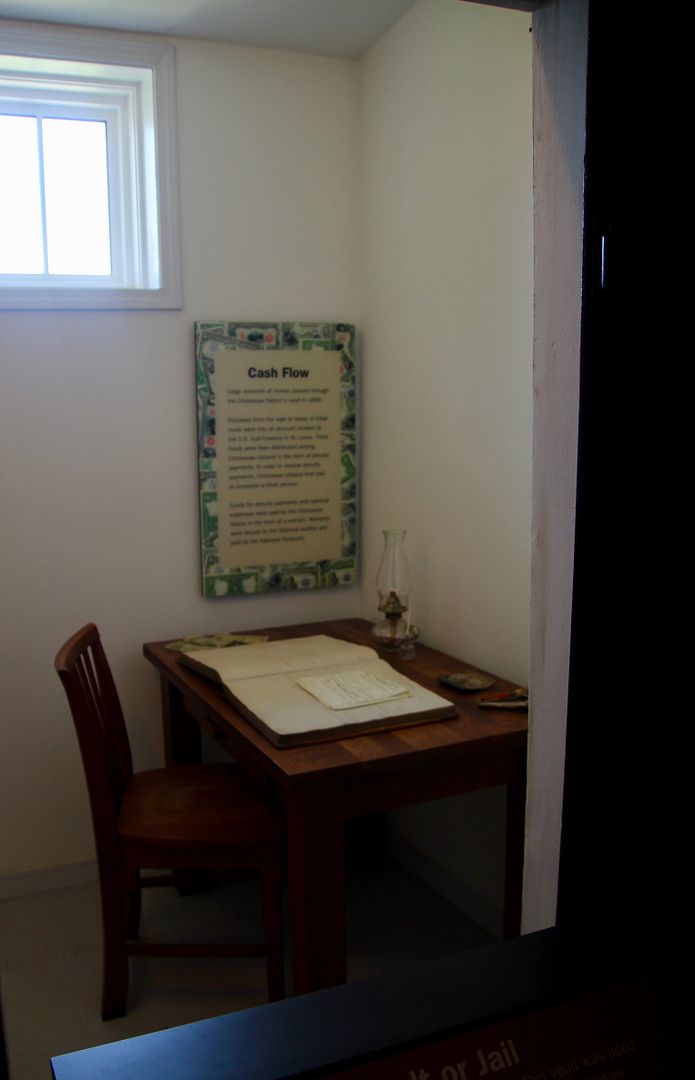

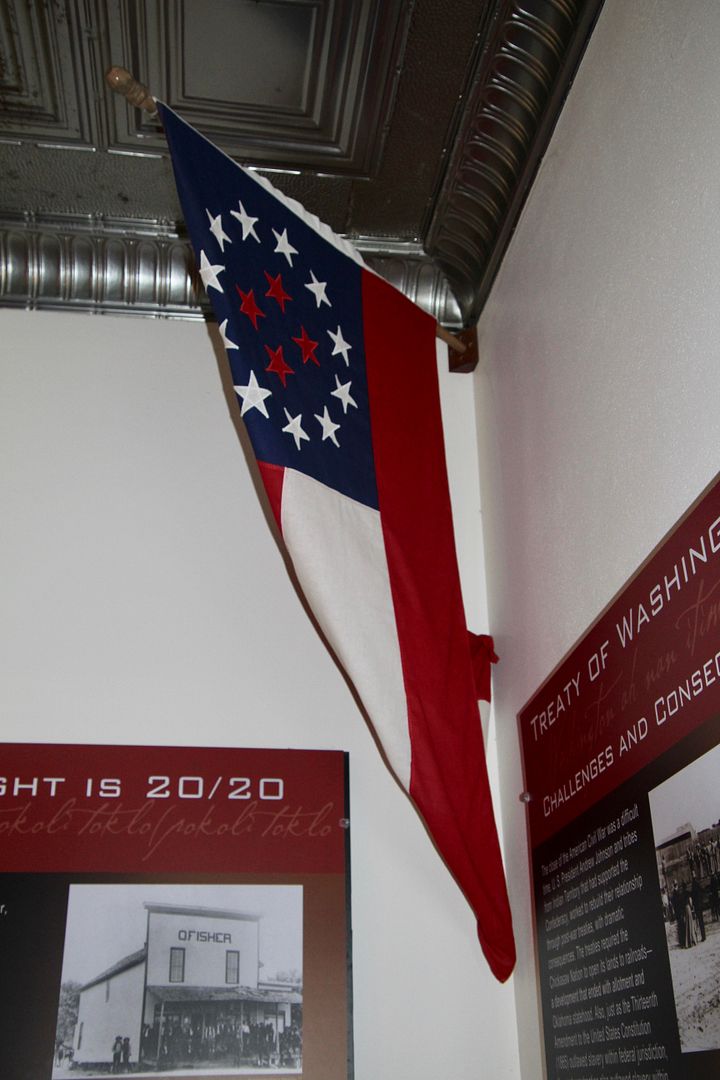
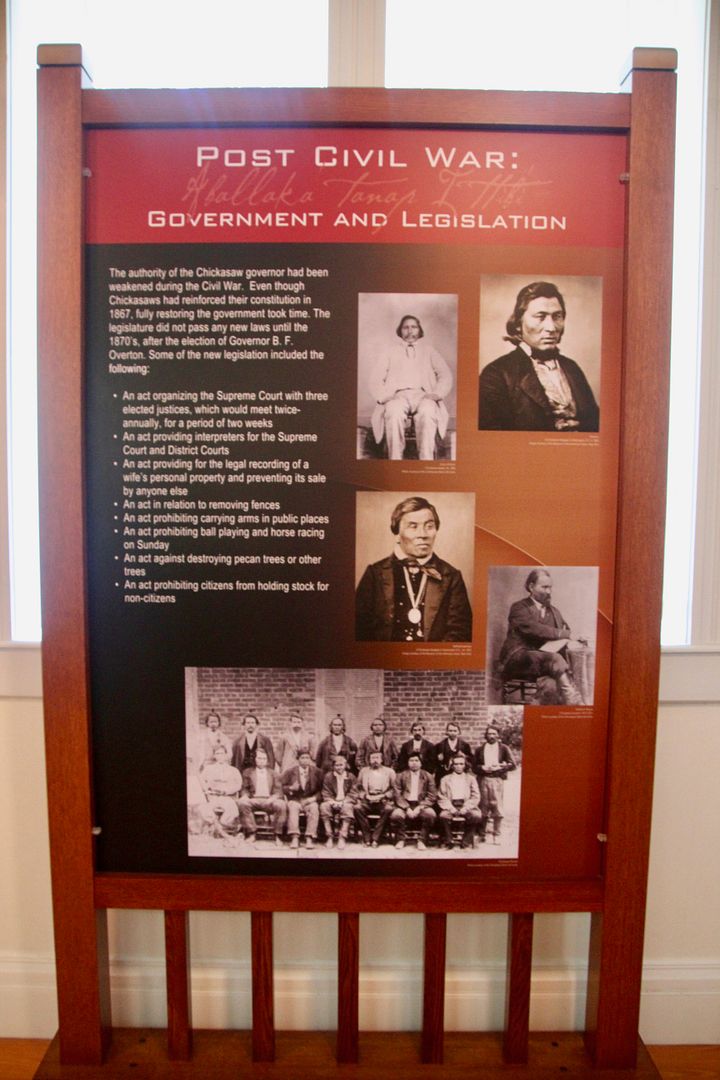
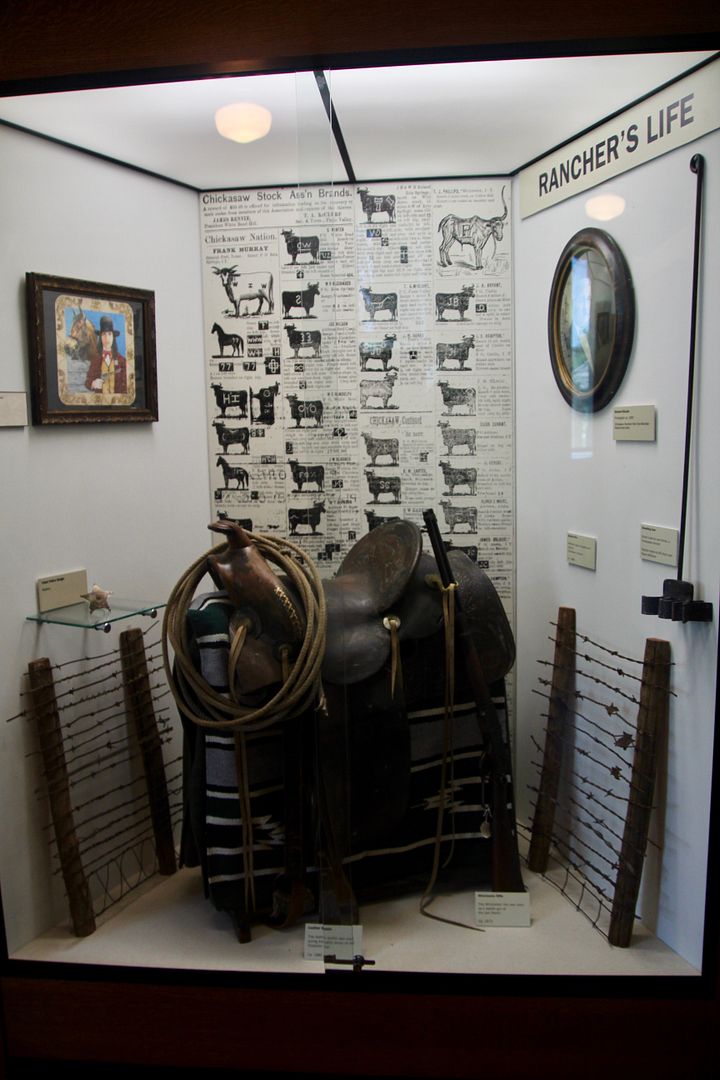
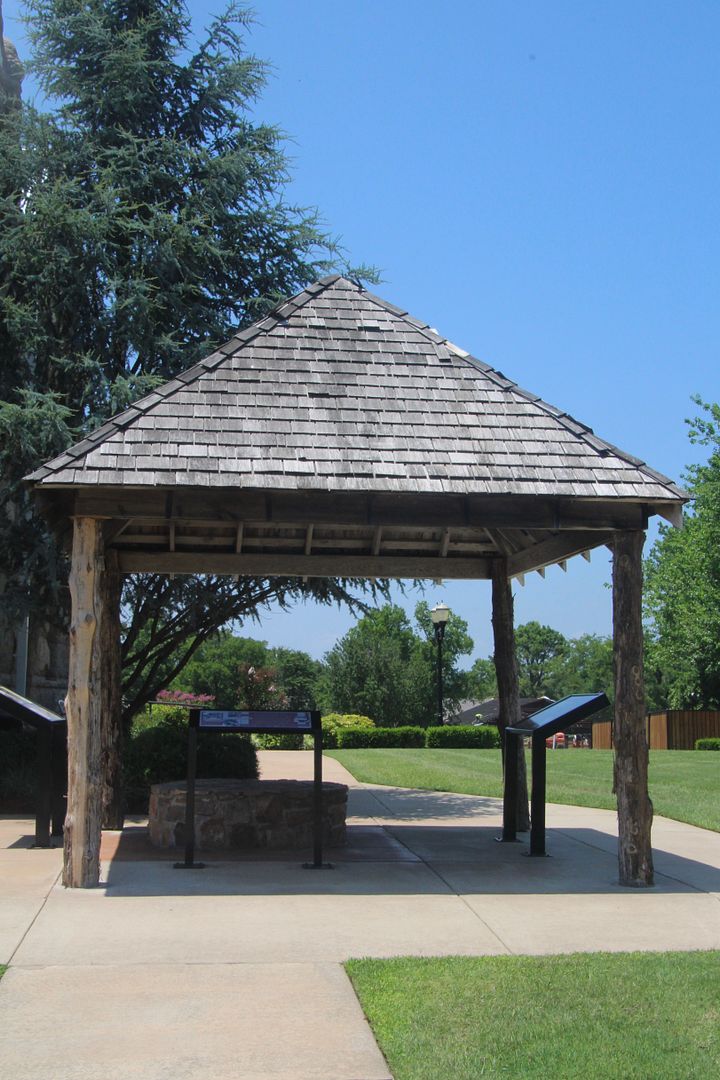

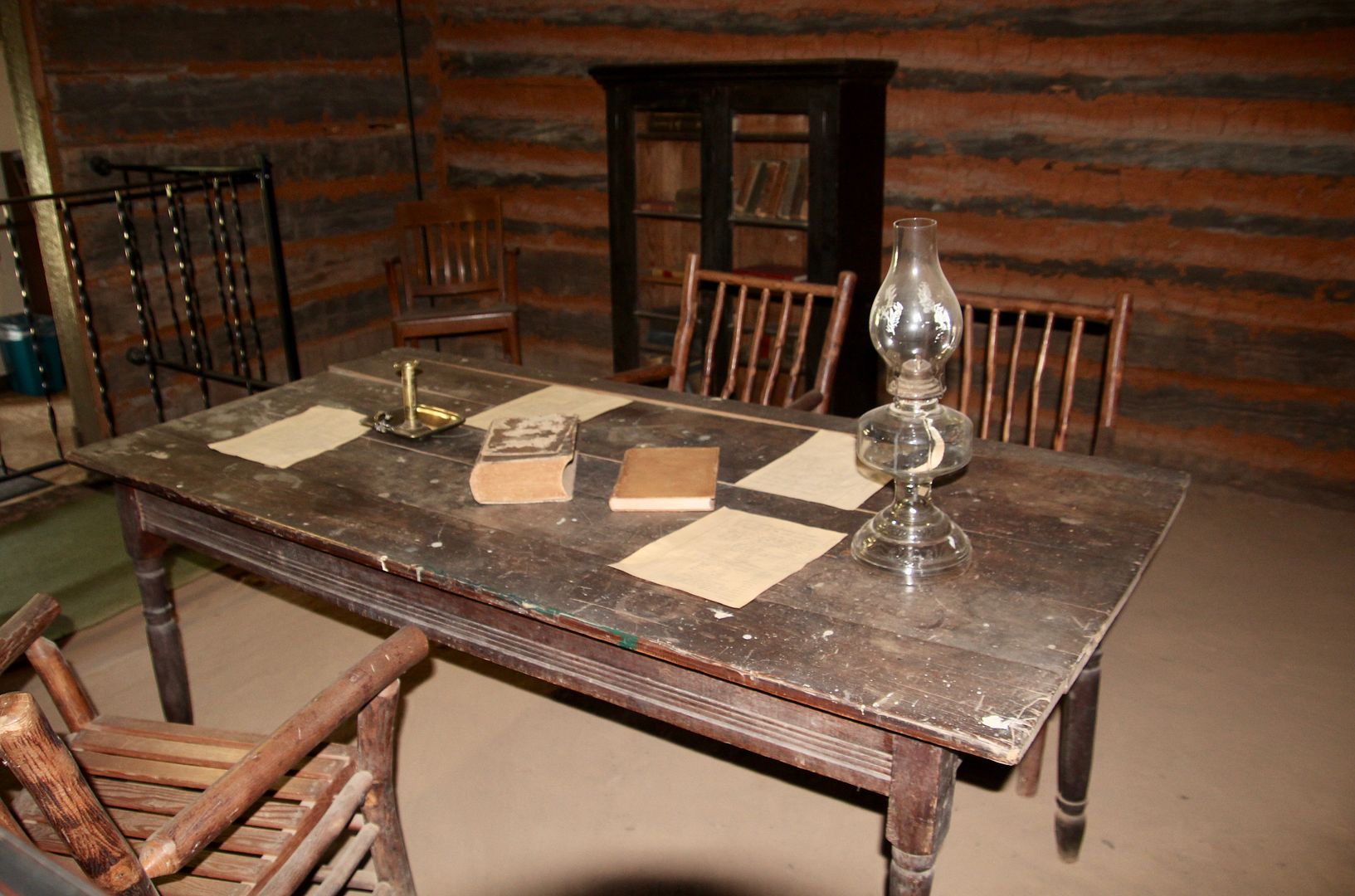

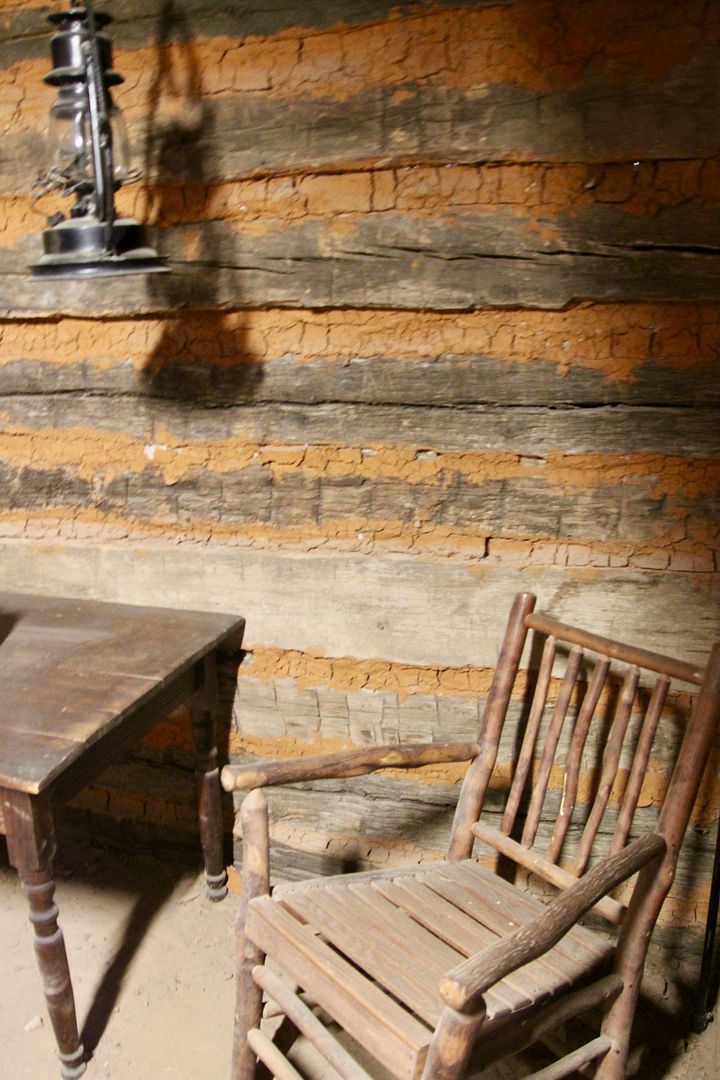

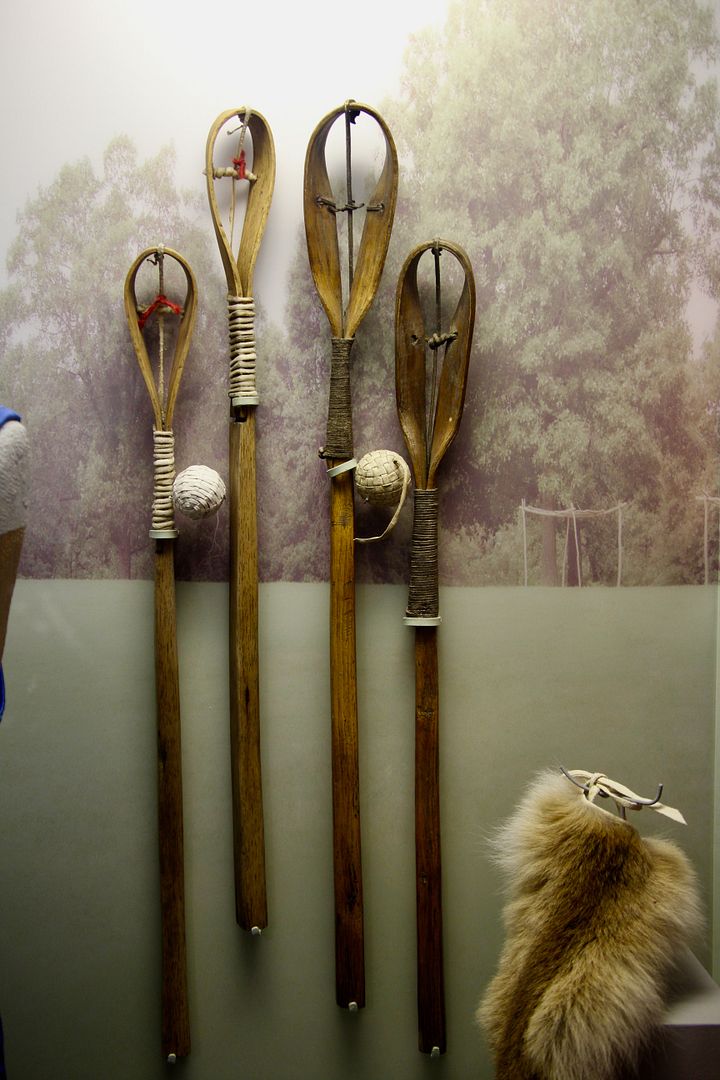
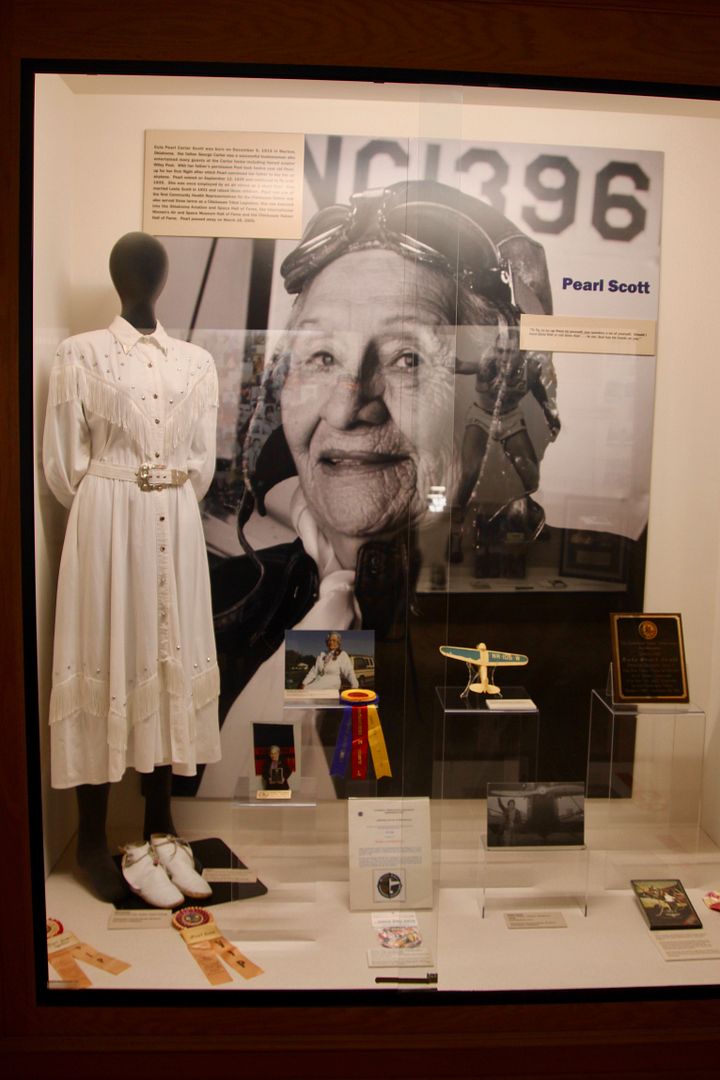
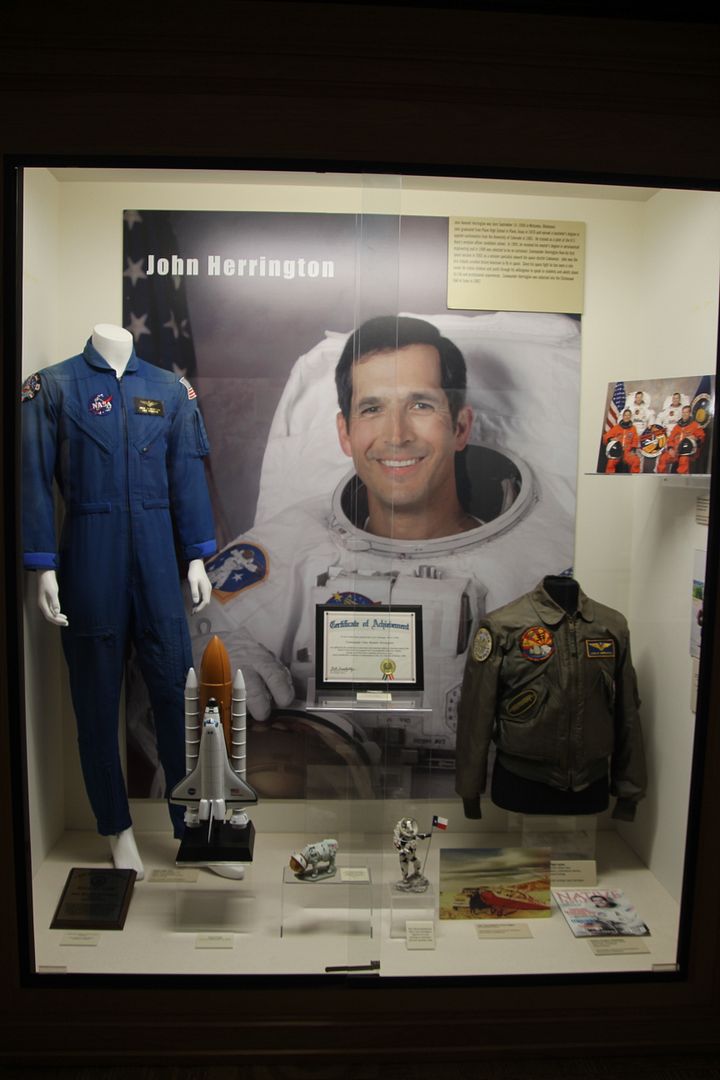

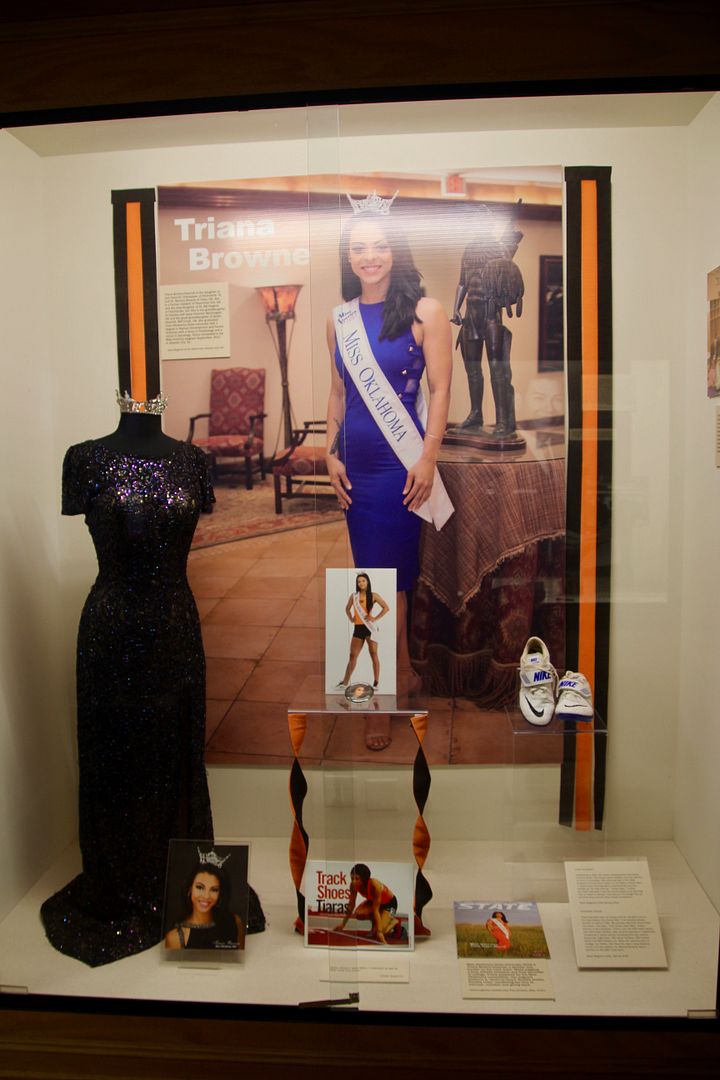
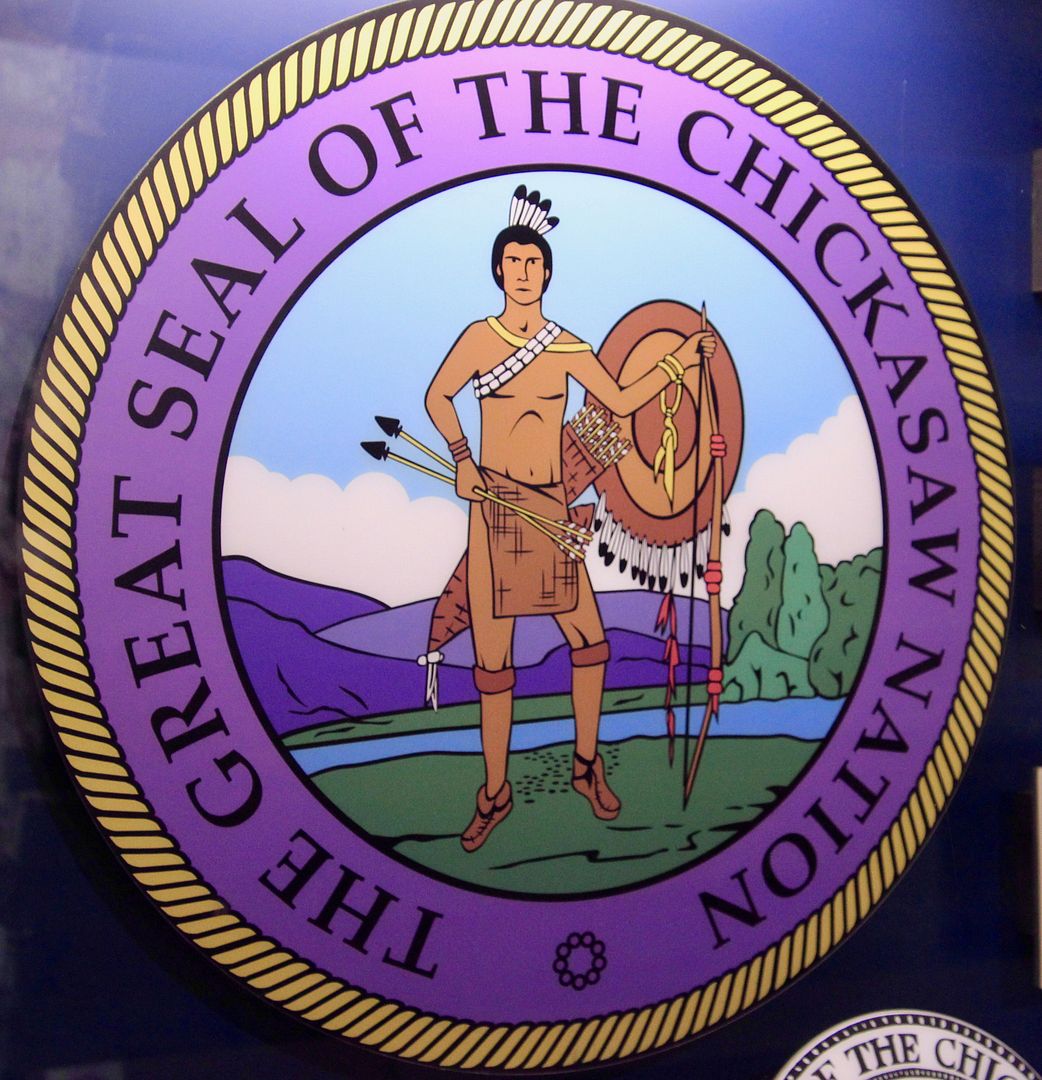
No comments:
Post a Comment